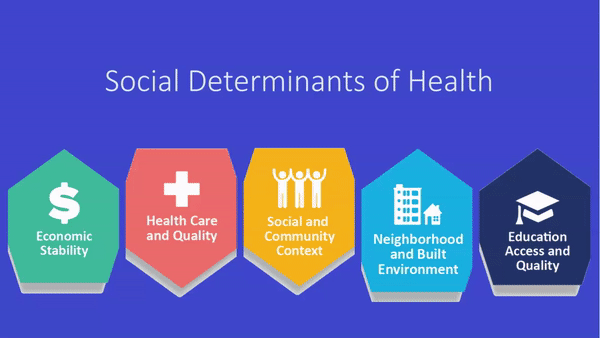3.1 Understanding Social Determinants of Health

What are the Social Determinants of Health?
“The Social Determinants of Health (SDoH) are the complex, integrated and overlapping social structures, policies, and economic systems that affect health and quality of life outcomes” (PCDP, 2019, para. 1). They are apparent in the conditions (work and living) that impact our everyday lives (e.g., education, income, social status, social supports, social environments, and access to health/medical care), that vary across populations (CPHA, n.d.). SDoH can have both positive and negative impacts on health. For example, a person’s socio-economic status (SES), and the SES of the area where they grow up and live, impacts current and future health status and health outcomes. Higher SES is associated with better health and positive life outcomes (CPHA, n.d).
VIDEO: What Makes us Healthy? Understanding the Social Determinants of Health
The following video provides an introduction to SDoH and the frameworks that are used to better understand how these determinants vary across populations.
Structural & Intermediary Determinants of Health
SDoH are classified as either structural or intermediary in nature, with structural determinants operating through intermediary social factors.
- Structural Determinants are the social and political context that shape and reinforce the class divisions within our society. These determinants use hierarchies, based on power and access to necessary resources, to define our individual socioeconomic status (Solar & Irwin, 2010).
- Intermediary Determinants are the more tangible things that impact our health status tied to our position in social hierarchies such as: housing, social environments, food, stress, workplaces, physical activity, and available social supports (Solar & Irwin, 2010).

